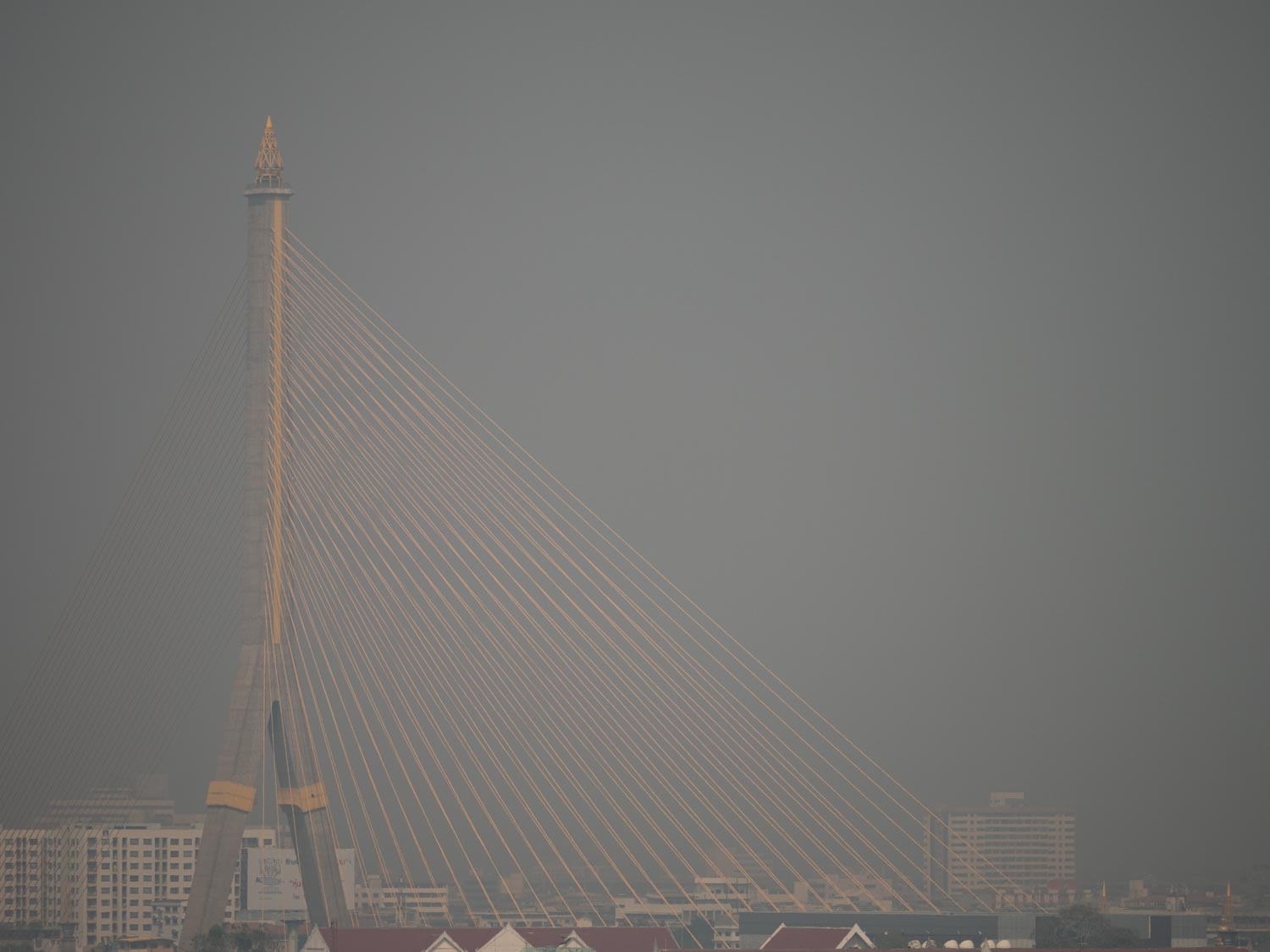
Smog pollution in Bangkok. Bangkok, the vibrant capital of Thailand, known for its bustling streets, delicious street food, and rich cultural heritage, is grappling with a severe issue that threatens the health and well-being of its residents, smog pollution. In recent years, the city has faced hazardous levels of air pollution, primarily due to fine particulate matter known as PM2.5.
The causes
Several factors contribute to Bangkok’s persistent smog problem. One of the primary culprits is traffic emissions. With over ten million vehicles on the road, the exhaust fumes from cars, buses, and motorcycles significantly contribute to the city’s air pollution. Industrial activities, particularly from factories located in and around the city, also release pollutants into the atmosphere.
Another significant factor is agricultural burning. Farmers in neighboring regions often burn crop residues to prepare their fields for the next planting season, a practice that releases large amounts of smoke and particulate matter into the air. Additionally, forest fires, both accidental and intentional, add to the pollution levels.
The impact
The impact of smog pollution on the health of Bangkok’s residents is alarming. Fine particulate matter, especially PM2.5, can penetrate deep into the lungs and enter the bloodstream, leading to a range of health issues. Respiratory problems, such as asthma and bronchitis, are common, and there is a heightened risk of cardiovascular diseases. Long-term exposure can also lead to more severe conditions, including lung cancer.
In January 2025, Bangkok experienced some of the worst air quality in the world, with PM2.5 levels reaching as high as 108 micrograms per cubic meter (µg/m³) in certain districts. To put this in perspective, the World Health Organization’s recommended safe level for PM2.5 is 10 µg/m³.
The response
The Bangkok Metropolitan Administration (BMA) has been actively working on measures to combat smog pollution. Residents have been advised to wear facemasks, avoid outdoor activities, and work from home if possible during high pollution days. The BMA has also implemented cloud seeding operations to induce rainfall and clear the air.
Efforts to reduce traffic emissions include promoting the use of public transportation, investing in electric vehicles, and implementing stricter emission standards for vehicles. Additionally, there have been campaigns to raise awareness about the dangers of agricultural burning and encourage farmers to adopt more sustainable practices.
Looking ahead
While these measures are steps in the right direction, Bangkok’s battle with smog pollution is far from over. Continuous efforts are needed to address the root causes and protect the health of its residents. Collaboration between the government, industries, and the public is crucial to ensure a cleaner and healthier future for Bangkok.
Despite the challenges, the city’s resilience and commitment to improving air quality offer hope for a smog-free Bangkok. It’s a fight that requires determination, innovation, and a collective effort from all sectors of society.
Bangkok’s story is a reminder of the importance of sustainable practices and the urgent need to tackle environmental issues head-on. The city’s journey towards cleaner air is not just a local concern but a global one, as urban centers worldwide grapple with similar challenges.
Conclusion
As we look to the future, the hope is that Bangkok will emerge victorious in its battle against smog pollution, setting an example for other cities to follow. The journey may be long and arduous, but with persistence and collaboration, a brighter and clearer Bangkok is within reach.
Shot on
Panasonic GH5 with Olympus 40-150mm f2.8 Pro lens.
